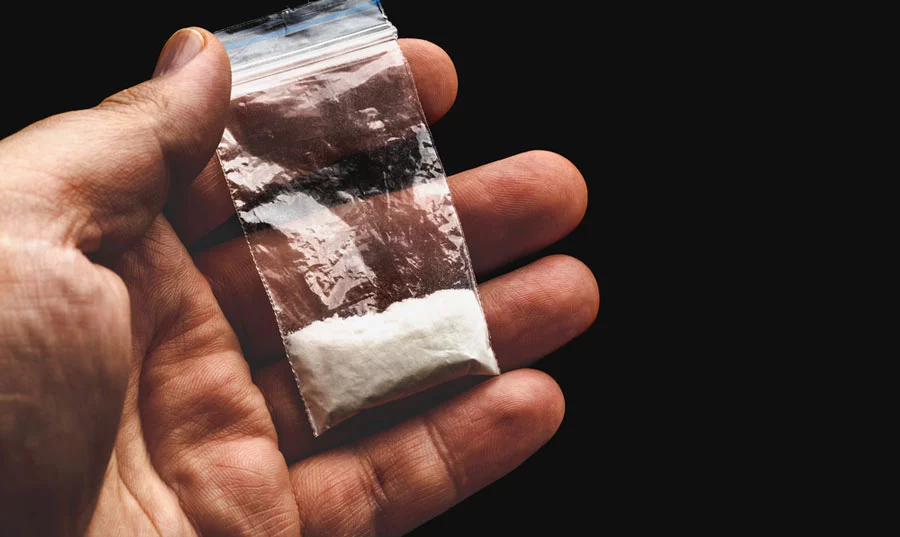Helping a Loved One Overcome Fentanyl Addiction
Fentanyl is a powerful and dangerous synthetic opioid that has become increasingly prevalent in recent years. Experiencing a close family member or friend struggling with fentanyl addiction can be emotionally overwhelming and heartbreaking. Fentanyl abuse played a part in thousands of overdose deaths over the last few years, so it’s important to understand drug abuse and the risk factors of fentanyl use disorder. According to Drug Abuse Warning Network (DAWN), Fentanyl was one of the top five drugs seen in drug-related emergency room visits. Fortunately, there are many effective ways to help your loved one through their recovery journey, once you recognize the signs of fentanyl use and can get them help!
At Catalina Behavioral Health in Tucson, Arizona, we can help your loved one with their fentanyl addiction and fentanyl withdrawal. Keep reading to learn more about the symptoms of fentanyl addiction and how you can recover with support, today!
What Is Fentanyl?

Fentanyl is a powerful opioid drug used to treat severe pain. It’s 50-100 times more powerful than morphine, making it one of the most potent opioids on the market. It’s usually prescribed in the form of an injection or patch but can also be found in pill form and mixed with other drugs like heroin and cocaine. This makes it particularly dangerous because users may not be aware that they’re taking fentanyl in their other opioids and drugs until it’s too late. According to the Centers For Disease Control, 150 people die each day from overdose related to opioid analgesics like fentanyl.
Signs of Fentanyl Addiction
The signs of fentanyl use can vary depending on how much of the drug has been taken and how often. However, the following signs are some of the most common:
Physical Symptoms of Fentanyl Abuse
Fentanyl use can have serious physical effects, including slowed breathing, dizziness, nausea and vomiting, and constipation. In the use of fentanyl, slurred speech is common as well. These symptoms often appear alongside other signs of Fentanyl and use of other opioids, such as drowsiness or confusion.
More serious physical signs and symptoms include seizures, coma, and even death due to oxygen deficiency. If you observe any of these incredibly dangerous symptoms in someone you care about, it is important to seek immediate medical attention.
Get Immediate Help For Fentanyl Addiction!
Behavioral Symptoms of Fentanyl Abuse
The behavioral symptoms associated with fentanyl use are often more subtle than physical symptoms but just as important to recognize. People who are using fentanyl may display social withdrawal and become more isolated from family and friends or exhibit risky behavior such as engaging in unprotected sex or driving while impaired. Other symptoms of fentanyl addiction include changes in their mood or appetite or show signs of financial problems due to excessive spending on drugs.
Psychological Symptoms of Fentanyl Abuse
In addition to physical and behavioral changes and negative consequences, those who abuse fentanyl may also experience psychological changes such as extreme agitation or paranoia, depression or anxiety, hallucinations or delusions, and memory loss or difficulty concentrating. These psychological symptoms can be very hard for family members and friends to recognize without professional help, especially because they often mimic other mental health conditions, so a substance use disorder may not be suspected.
Fentanyl Withdrawal Symptoms

When someone stops using fentanyl suddenly, they will experience physical and psychological withdrawal symptoms. Some of the most common physical symptoms include nausea, vomiting, diarrhea, headache, sweating, and chills. Psychological symptoms may include anxiety, depression, irritability, and insomnia. These symptoms typically begin within 12-24 hours after the last dose of fentanyl was taken and will peak around 24-48 hours after quitting.
The intensity of these symptoms will depend on several factors including how much fentanyl was used before quitting, how long it was used for, the user’s metabolism rate, and their overall health condition prior to quitting.
Additionally, co-occurring disorders such as depression or anxiety can also affect the severity of the symptoms. Depending on these factors, withdrawal from this powerful drug could last anywhere from days to weeks or even months in some cases.
Fentanyl Overdose
The most common signs of a fentanyl overdose include slowed breathing, pinpoint pupils, confusion, nausea, vomiting, drowsiness, loss of consciousness, and even coma. In extreme cases, a person may stop breathing completely or experience cardiac arrest due to respiratory depression (a condition where the body does not get enough oxygen). Two of the most common reasons for fentanyl overdose include the following:
Mixing with Other Substances
Fentanyl overdoses can happen when someone mixes it with other substances such as alcohol or benzodiazepines. Mixing different drugs can increase their potency significantly and put your health at risk by causing severe reactions in your body that could lead to an overdose.
Increased Tolerance
Another reason people experience fentanyl overdoses is that they become tolerant to the drug over time and start taking larger doses than they should. As mentioned before, since fentanyl is so potent, even small doses can have powerful effects on the body. When someone develops a tolerance for the drug, they may feel like they need more and more in order to get the same feeling from it -one of the major risk factors of overdose. If an overdose occurs, call 911 immediately!
Treatment for Fentanyl Use Disorder: What You Need to Know
If you or someone you know is struggling with fentanyl use disorder, it’s important to understand the treatment options available. Here’s what you need to know about treatment for fentanyl addiction and other opioid use disorders.
Detoxification
The first step in treating a substance abuse issue related to fentanyl is detoxification. During this process, your body will rid itself of any remaining traces of fentanyl and other drugs that may be present in your system. Detoxing from fentanyl can be dangerous, so it’s important to do it under medical supervision.
Symptoms of withdrawal typically begin within 8 and 24 hours after your last dose of fentanyl. Withdrawal symptoms can be extremely uncomfortable, though fortunately, they can be treated with medications such as buprenorphine and methadone that help reduce cravings and ease withdrawal symptoms without causing intoxication or dependence on the medication itself. It’s always a good idea to detox in a medical treatment facility, as a person going through detox is likely to engage in addictive behaviors to obtain fentanyl if they’re not under supervision at this time.
Behavioral Therapy

After completing detoxification from fentanyl, most people benefit from participating in some form of behavioral therapy. This type of therapy helps individuals understand their triggers for using drugs like fentanyl and develop coping strategies for dealing with cravings and avoiding relapse. Cognitive Behavioral Therapy (CBT) is one type of therapy that focuses on helping individuals identify negative thought patterns associated with drug use and replace them with more positive ones.
Other types of therapy that can be useful in treating an addiction to fentanyl include Dialectical Behavioral Therapy (DBT), Motivational Interviewing (MI), Contingency Management (CM), and 12-Step Programs like Narcotics Anonymous (NA).
Medications
In addition to these behavioral therapies, there are several medications available that can help treat an addiction to fentanyl or prevent relapse following treatment. These medications work by blocking or reducing the effects of opioids like fentanyl or reducing cravings for them.
For example, buprenorphine helps reduce cravings for opioids without causing intoxication or dependence on the medication itself while naltrexone blocks opioid receptors in the brain so that even if someone uses opioids they won’t get high from them. Without treatment, it’s common that fentanyl abuse continues, and the dangers of the drug remain.
Licensed Fentanyl Treatment Options in AZ
Get Help at Catalina for Fentanyl Use and Addiction Now
It’s important to recognize the signs and risk factors of fentanyl use and other substance use disorders so that you can get help before addiction takes hold. If you think that you or someone close to you may have a problem with fentanyl abuse or addiction, don’t hesitate to reach out for assistance from professionals who specialize in treating substance abuse disorders. With timely intervention and the right treatment plan in place, there is hope; it’s possible to make strides toward achieving sobriety from fentanyl addiction.
All calls to Catalina Behavioral health are confidential, so please reach out now and get options if you are struggling!





